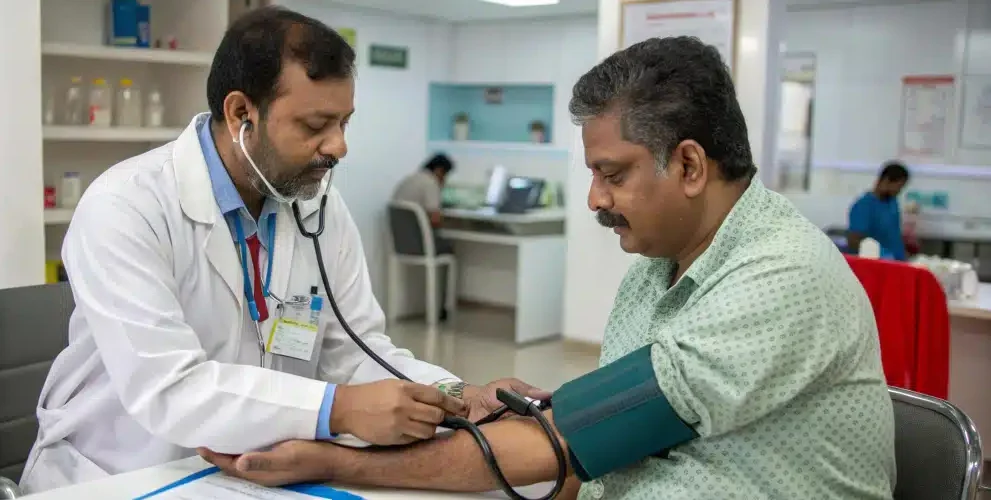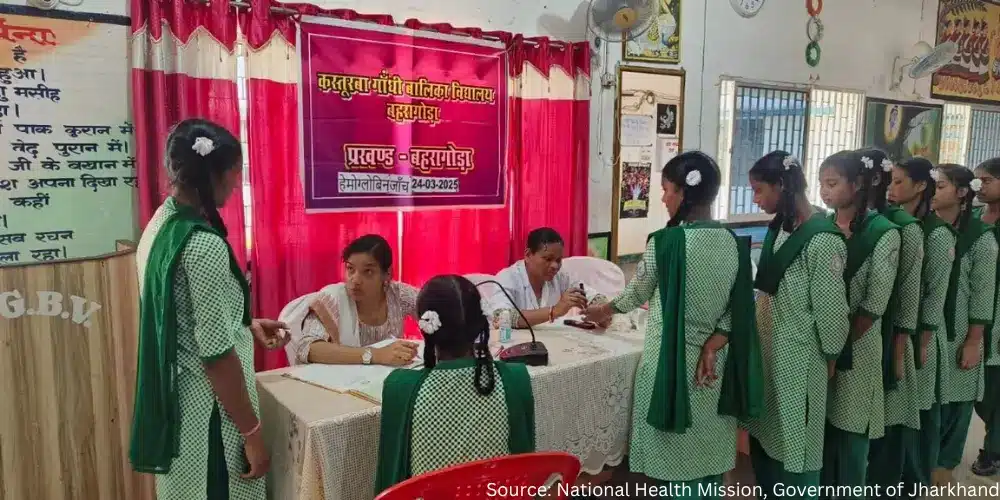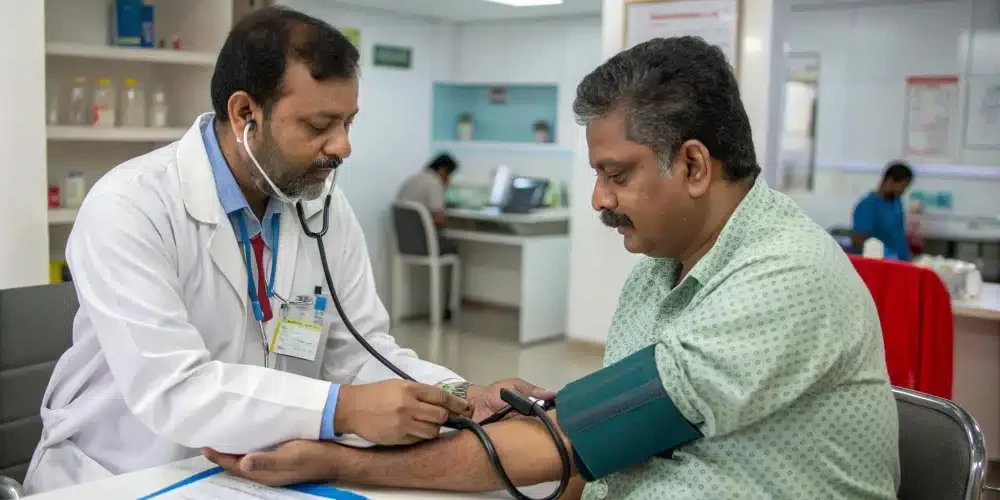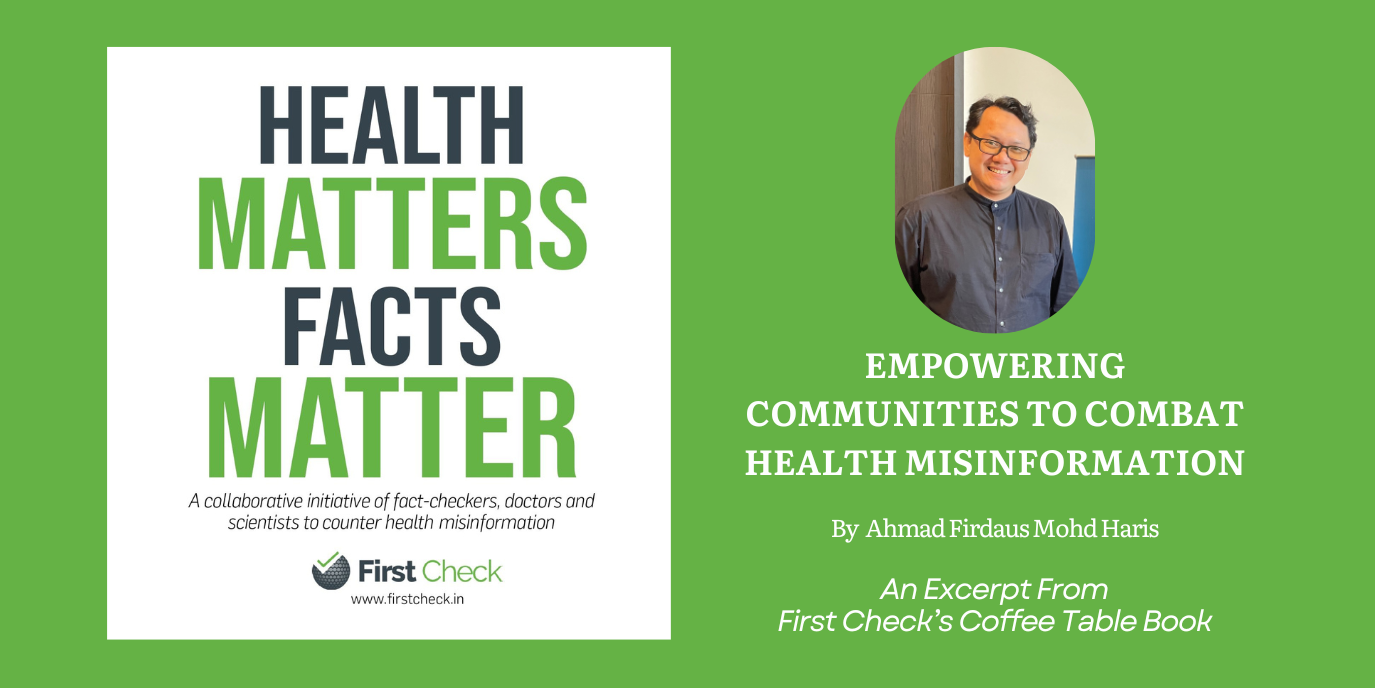Latest
American Heart Association revamps blood pressure guidelines for the first time since 2017. Could YOU be at risk?
New hypertension guidelines from the American Heart Association (AHA) and the American College of Cardiology mark a crucial shift, emphasising early detection and proactive management, especially for young adults
Author
Author
- admin / 6 hours

- 0
- 7 min read

Author
Hypertension remains one of the world’s most pressing health challenges. Globally, an estimated 1.28 billion adults aged 30–79 years live with high blood pressure, with two-thirds of them in low- and middle-income countries. Alarmingly, nearly half are unaware of their condition, less than half receive treatment, and only one in five manages to keep it under control.
Recognising this growing burden, the American Heart Association (AHA) and the American College of Cardiology (ACC) have announced a significant update to their blood pressure (BP) guidelines for 2025—the first such revision since 2017. This marks a crucial turning point in how doctors approach hypertension, shifting focus from simply controlling numbers to preventing long-term complications, especially among younger adults.
Increasingly, people in their 20s and 30s are showing signs of hypertension, even in India, and ignoring early symptoms may pave the way for serious health problems later in life, including heart disease, stroke, and even cognitive decline. The new guidelines could be the roadmap to a more proactive approach to controlling hypertension and its related complications, especially in young adults.
What is blood pressure (BP)?
Blood pressure is the measure of the force exerted by blood as it moves through the arteries. Each heartbeat pumps blood into the aorta, the body’s largest artery, before distributing oxygen and nutrients to organs and tissues. For most adults, a normal reading is below 120/80 mm Hg. However, blood pressure is not a static measurement—it fluctuates throughout the day depending on activity, posture, emotional state, medication, and even age.
Understanding blood pressure is vital because both extremes—too high or too low—can be harmful. Hypertension (high blood pressure) is one of the leading risk factors for cardiovascular disease. Left unchecked, it can damage arteries, strain the heart, and increase the likelihood of stroke or heart attack. In severe cases, known as hypertensive emergencies, blood pressure can rise to levels that threaten immediate organ damage and even death. Conversely, hypotension (low blood pressure), though often less discussed, can also cause dizziness, fainting, and dangerous falls. Critically low pressure limits blood supply to vital organs and may lead to life-threatening conditions like shock.
Unlike other health issues that present with obvious symptoms, high blood pressure is often called the “silent killer” because most people cannot feel when it is elevated. Regular monitoring, whether at a healthcare provider’s office or with a home device, remains the only reliable way to detect it. Early awareness and intervention are key to preventing irreversible complications.
What’s new in the guideline
The 2025 AHA guidelines retain the same blood pressure categories as before: normal (<120/80 mm Hg), elevated (120–129/<80 mm Hg), stage 1 (130–139/80–89 mm Hg), and stage 2 (≥140/90 mm Hg). What’s changed is the approach: the focus has shifted to “prevent early, act early,” emphasising long-term risk rather than isolated BP readings.
A key addition is the PREVENT™ risk calculator, developed in 2023, which estimates 10- and 30-year cardiovascular risk using factors like age, sex, BP, cholesterol, albumin-to-creatinine ratio, hemoglobin A1c, and optional social determinants (e.g., ZIP code). For adults aged 30–79 with stage 1 hypertension and no known CVD, diabetes, or CKD, a PREVENT 10-year CVD risk ≥7.5% supports initiating antihypertensive therapy. This allows clinicians to personalise decisions based on long-term risk rather than a single BP measurement.
Lifestyle modifications—such as following a DASH or Mediterranean-style diet, limiting sodium, reducing alcohol, exercising regularly, and managing stress and sleep—remain first-line. If BP remains uncontrolled after a trial period, medication should be started earlier in high-risk stage-1 patients. For stage 2 hypertension, therapy with two drugs in a single-pill combination continues to be recommended to accelerate control and improve adherence.
The guidelines also explicitly link BP control to cognitive health, recommending early intervention to reduce long-term risks of dementia and cognitive decline. Additional updates include clearer protocols for blood pressure management before, during, and after pregnancy, routine urine albumin-to-creatinine testing, expanded screening for primary aldosteronism, and an emphasis on team-based care and home monitoring. Clinicians are encouraged to consider other risk-enhancing factors—such as family history, CKD, inflammatory conditions, or premature menopause—alongside PREVENT scores when deciding on treatment.
Addressing hypertension in young Indians and why early detection matters
The situation in India is also similar. Hypertension is a major public health concern in India, affecting an estimated 220 million adults, yet only 12 per cent have their blood pressure under control. Among young adults and even children, the situation is particularly concerning.
A 2022 study analysed data from the 2016–2018 Comprehensive National Nutrition Survey (CNNS) and found that 35 per cent of 10- to 12-year-olds and 25 per cent of 13- to 19-year-olds had blood pressure in the stage 1 or 2 hypertension range, translating to roughly 69 million Indian youth at risk of cardiovascular disease (CVD) and associated risk factors such as obesity, high blood glucose, and lipid abnormalities. Previous studies had reported much lower prevalence rates, ranging from 2 to 25 per cent, highlighting the increasing burden of high blood pressure among Indian children and adolescents.
Focusing on young adults specifically, a study from Kerala found that 11.2 per cent had hypertension and 33.3 per cent were prehypertensive, with men nearly three times more affected than women. Awareness, treatment, and control were significantly lower among younger adults, especially men, compared to older adults, emphasising the urgent need for early detection and proactive management. These findings underscore the importance of regular monitoring, lifestyle interventions, and targeted public health initiatives to prevent long-term cardiovascular complications in India’s youth.
Research has identified excessive salt intake, alcohol and tobacco use, obesity, poor diet, and physical inactivity, as the major risk factors behind the growing hypertension crisis among young and middle-aged Indians.
The Asian diet, often higher in salt than Western diets, worsens the problem. Family history, illiteracy, and socioeconomic factors also play a role. Rural women, often sedentary and with limited awareness, are especially vulnerable, while men are more affected by smoking and alcohol. The review stresses that addressing these modifiable risks through awareness, healthier lifestyles, and programs like NPCDCS is crucial for effective prevention and management.
Dr (Prof) Tarun Kumar, Associate Director, Medanta Moolchand Heart Center, stressed that chronic diseases like hypertension and diabetes must be controlled early to prevent long-term complications. “If left unchecked, hypertension can damage the kidneys, heart, blood vessels, retina, and even brain function,” he said.
He explained that earlier, the focus in hypertension care was mainly on lifestyle modifications without structured risk assessment. However, new guidelines now emphasise calculating a patient’s 10-year risk of complications, which helps doctors stratify patients and treat them more effectively. “Someone with a family history of chronic kidney disease, diabetes, or heart problems is at much higher risk even with borderline blood pressure,” he added, noting that the introduction of risk calculators for hypertension is a step forward.
He also highlighted that nearly 28 per cent of India’s population is hypertensive, yet around 50 per cent have uncontrolled blood pressure. Many remain undiagnosed, others don’t take medicines regularly, and even among those on treatment, blood pressure often does not reach the desired range. “The real challenge is multifold. Early detection, regular treatment, and maintaining BP within normal limits are the keys to preventing escalation,” he stressed.
Uncontrolled hypertension, he warned, not only causes macrovascular complications like kidney disease, heart problems, and strokes but also leads to chronic microvascular damage, which can eventually impair brain function.
Lifestyle, he underlined, remains the cornerstone of prevention. Avoiding sedentary habits and engaging in at least 30 minutes of walking or similar activity daily is crucial. Stress management, a proper sleep cycle of 6–7 hours, and controlling obesity through diet and exercise are equally important. He pointed out that unhealthy food patterns—excessive salt, high-calorie intake, and rising obesity—directly fuel hypertension and diabetes.
“Everything is connected—you eat more calories, you gain weight, your BP rises, your sugar becomes uncontrolled. So, weight, diet, salt, cholesterol, and lifestyle all need to be managed together,” Dr Kumar explained.
Also Read: We should not miss a beat to take care of our own heart health, says Dr Tarun Kumar
Do you have a health-related claim that you would like us to fact-check? Send it to us, and we will fact-check it for you! You can send it on WhatsApp at +91-9311223141, mail us at hello@firstcheck.in, or click here to submit it online










